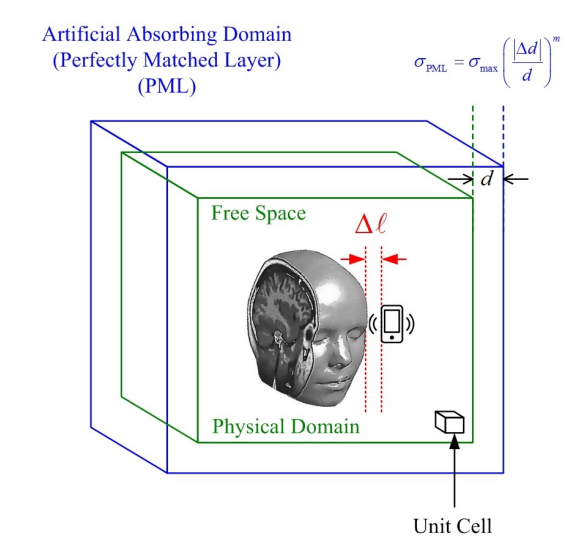Abstract : This research work proposes a method to rigorously model a 3D human head from the informative data in magnetic resonance imaging (MRI). The approach is based on each slice of 53 MRI resized to a 64 × 64 grayscale image to enable a practical simulation. The optimized unit cell of 5.6 × 5.6 × 5.6 mm3 is identified as a particular type of tissue. It corresponds to the average size of an
actual human brain. The material properties are assigned to various tissues of the entire structure of the human head. The computational model of this will then be used as a virtual object to study the specific absorption rate (SAR) with electromagnetic radiation (EMR) at 2.6 GHz as a 5G mid-band frequency. A commonly known finite-different time-domain (FDTD) method is used as a
tool in the SAR simulation. The key results show that a handset with a power of less than 0.8 W, operating at a handset to head separation distance of 1.12 cm, will meet the FCC SAR 1g limit of 1.6 W/kg.
 Keywords: Rigorous Human Head Model, Finite-Different Time-Domain, FDTD, Magnetic Resonance Imaging, MRI, Specific Absorption Rate, SAR, Electromagnetic Radiation, EMR
Fill Paper : https://ph02.tci-thaijo.org/index.php/ECTI-EEC/article/download/247522/167981/886057
Keywords: Rigorous Human Head Model, Finite-Different Time-Domain, FDTD, Magnetic Resonance Imaging, MRI, Specific Absorption Rate, SAR, Electromagnetic Radiation, EMR
Fill Paper : https://ph02.tci-thaijo.org/index.php/ECTI-EEC/article/download/247522/167981/886057
 Keywords: Rigorous Human Head Model, Finite-Different Time-Domain, FDTD, Magnetic Resonance Imaging, MRI, Specific Absorption Rate, SAR, Electromagnetic Radiation, EMR
Fill Paper : https://ph02.tci-thaijo.org/index.php/ECTI-EEC/article/download/247522/167981/886057
Keywords: Rigorous Human Head Model, Finite-Different Time-Domain, FDTD, Magnetic Resonance Imaging, MRI, Specific Absorption Rate, SAR, Electromagnetic Radiation, EMR
Fill Paper : https://ph02.tci-thaijo.org/index.php/ECTI-EEC/article/download/247522/167981/886057 